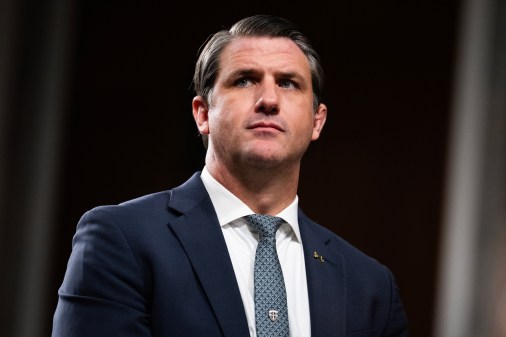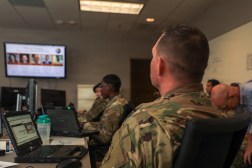SOCOM adds new advanced AI capabilities to tech wish list

U.S. Special Operations Command amended a broad agency announcement this week, adding additional AI and advanced autonomy capabilities to its technology wish list.
The move comes amid a broader modernization push by special ops forces and the Defense Department to add new digital tools and robotic platforms to their arsenal.
In a new subsection for “Advanced Autonomy and Artificial Intelligence,” the amended BAA for technology development noted that SOF is keen on “modular, open integration” of cutting‐edge solutions incorporating AI and machine learning to enable enhanced autonomy in unmanned systems.
“Specific areas of interest include but are not limited to agentic AI and vision language action (VLA) models to achieve more sophisticated autonomous behaviors like adaptive learning; neural radiance fields (NeRFs) for 3D scene representation and navigation; generative AI for simulation and data augmentation; advanced automatic target recognition (ATR) algorithms with edge node refinement and autonomous model retraining; advanced machine learning operations (MLOPs) to support data management, model training, validation, and monitoring,” officials wrote.
They noted that proposed solutions need to be designed with well‐defined interfaces and adherence to open standards to promote interoperability and integration into existing architectures.
Earlier this year, the command re-released its “SOF Renaissance” strategic vision, which observed that innovations in AI, autonomous systems and cyber tools are reshaping warfare and enhancing targeting and strike capabilities.
The document calls for commando forces to be early adopters of these types of technologies. SOCOM has been on the cutting-edge before as an early DOD user of the Maven Smart System, for example.
“The distinction between optimizing and generative AI is crucial and will be a game changer. Swarms of low-cost drones and remote explosive devices, using AI and autonomy, blur traditional human-machine boundaries on the battlefield. SOF must also use these systems to improve decisionmaking and situational awareness,” officials wrote in the strategy.
Vice Adm. Frank Bradley, the current commander of Joint Special Operations Command who’s been nominated by President Donald Trump to be head of SOCOM, said the use of innovative drone capabilities and tactics in places like Ukraine and the Middle East have ushered in a “revolution in military affairs.”
“The changing, accelerating pace of technology, the ubiquitous information environment, and the advent of man-machine teamed autonomy on the battlefields of the world today are absolutely changing the character of warfare … in our very eyes,” Bradley said last week during his confirmation hearing with the Senate Armed Services Committee.
He added that legislative proposals such as the FORGED Act and SPEED Act, and other initiatives to reform DOD acquisitions and speed up the fielding of new tech, are “critical to allowing us to use the innovative spirit of our operators to be able to capture those problems and opportunities we see on the battlefield and turn them into new man-machine teamed approaches.”
The amendment to the BAA comes just two weeks after the Pentagon’s Chief Digital and Artificial Intelligence Office announced the award of $200 million contracts to multiple vendors for “frontier AI” projects.
“The adoption of AI is transforming the Department’s ability to support our warfighters and maintain strategic advantage over our adversaries,” CDAO Doug Matty said in a statement accompanying that announcement. “Leveraging commercially available solutions into an integrated capabilities approach will accelerate the use of advanced AI as part of our Joint mission essential tasks in our warfighting domain as well as intelligence, business, and enterprise information systems.”






